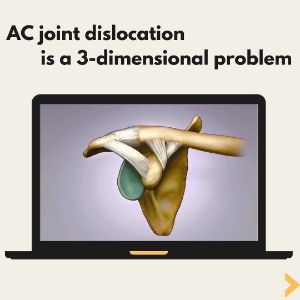Shoulder injuries, including AC joint separation, fractures, and rotator cuff tears, often require periods of immobilization to heal. However, prolonged lack of movement can sometimes lead to a painful condition known as frozen shoulder (adhesive capsulitis). This condition causes stiffness, pain, and restricted range of motion, making recovery even more challenging. Understanding the causes, symptoms, and, most importantly, preventive strategies can help you maintain shoulder mobility after an injury. At Steven Struhl, MD – AC Joint Separation in NYC, we specialize in orthopedic care to prevent complications and promote optimal recovery.
What is Frozen Shoulder?
Frozen shoulder occurs when the shoulder joint’s capsule thickens and tightens, restricting movement. This condition can develop after an injury, surgery, or prolonged immobilization, making it a significant concern for those recovering from shoulder trauma. While the exact cause of frozen shoulder is not always clear, it is more likely to occur when:
- The arm is immobilized for an extended period due to injury, surgery, or pain.
- Inflammation develops in the shoulder joint, leading to stiffness and reduced range of motion.
- Scar tissue forms, restricting movement within the joint.
- Underlying conditions such as diabetes, thyroid disorders, or heart disease are present, as these can increase the risk of frozen shoulder.
Symptoms of Frozen Shoulder
Frozen shoulder typically progresses in three stages, each lasting several months:
- Freezing Stage – Increasing pain and limited movement.
- Frozen Stage – Stiffness worsens, but pain may lessen.
- Thawing Stage – Gradual improvement in mobility and range of motion.
How to Prevent Frozen Shoulder After an Injury
Preventing frozen shoulder after an arm or shoulder injury requires early intervention and proactive movement when possible. Here are key strategies to minimize the risk:
1. Start Gentle Movement Early
Even while recovering, try to keep the shoulder moving within a safe range to prevent stiffness. If you have a sling, perform gentle hand, wrist, and elbow movements to maintain circulation. Working with a physical therapist is recommended for guided exercises that prevent joint restriction.
2. Perform Shoulder Exercises
Some exercises that may be recommended by your doctor, surgeon or physical therapist include:
- Pendulum Exercises: Lean forward and let your arm hang, making small circular motions.
- Wall Walks: Slowly walk your fingers up a wall to gently stretch the shoulder.
- Passive Range-of-Motion Movements: Use the uninjured arm to assist in moving the affected shoulder within a comfortable range.
3. Apply Heat Before Stretching
Applying warm compresses or taking a warm shower before stretching can help loosen the joint and improve mobility.
4. Maintain Good Posture
Avoid slouching, as poor posture can contribute to shoulder stiffness. Remember to keep your shoulders relaxed and mobile throughout the day.
Treatment Options for Frozen Shoulder
If frozen shoulder develops, treatment focuses on reducing pain and restoring movement:
- Physical Therapy: The most effective treatment for improving mobility.
- Anti-Inflammatory Medications: NSAIDs help manage pain and inflammation.
- Steroid Injections: Cortisone shots can relieve inflammation and stiffness.
- Surgical Intervention: In severe cases, shoulder manipulation or arthroscopic surgery may be necessary.
Expert Shoulder Care in NYC
If you’ve suffered a shoulder or arm injury, preventing frozen shoulder is a critical part of your recovery. Steven Struhl, MD – AC Joint Separation in NYC, provides expert orthopedic care to help patients heal properly and maintain mobility. Contact us today to schedule a consultation and ensure your shoulder stays healthy throughout the healing process.
Posted on behalf of Steven Struhl MD





